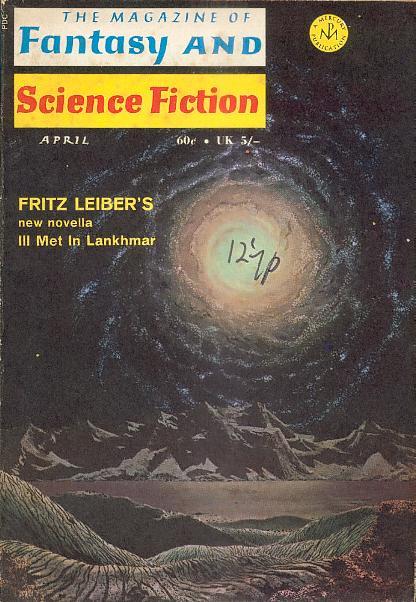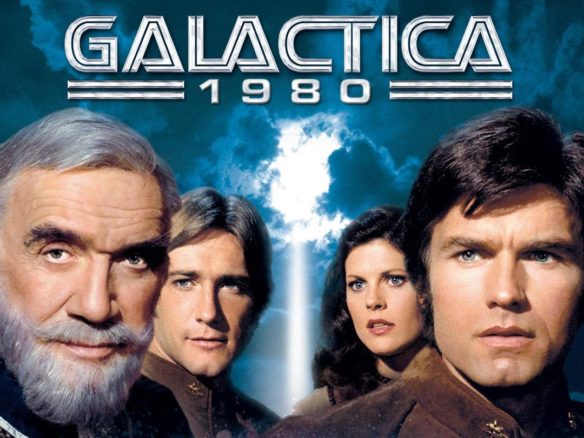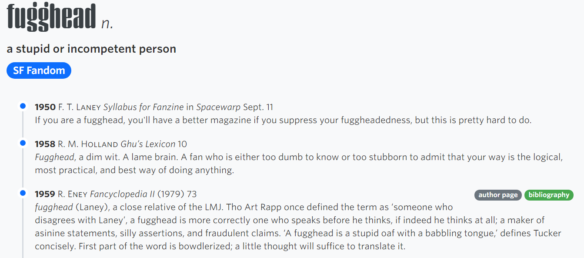(1) ON SAIL. Walter Jon Williams gets reacquainted with his 25-year-old self in “Onward Into the Past”.
Back in April Kathy and I drove the three and a half hours to Portales for the 45th Jack Williamson Lecture, and had to figure out how we were going to entertain ourselves for the long drive across the Llano Estecado. Kathy suggested we listen to the audio book of To Glory Arise, the first of my Privateers & Gentlemen books. I’d met Kathy more than ten years after saying goodbye to that series, and she’d never read them, so she was coming to them fresh.
So we listened to the book driving out and back, and were entertained by the book and Bronson Pinchot’s excellent reading of it. I found the book so entertaining that I’ve been listening to the rest of them as they’ve been released, though the reason I was so entertained was peculiar to me— reviewing that series was a way of re-discovering my twenty-five-year-old self, the person who wrote that series, a person who is not quite the man I am today.
I was surprised by how much time and energy I devoted to the psychological dimensions of my characters. I mean, I certainly knew the psychological element was there— I considered it a selling point of the series that it wasn’t about two-dimensional action heroes, but instead characters of some complexity. But there ended up being more pages devoted to psychology than I remembered, and I think more pages than the characters actually warranted. I did not understand the concept of enough. I was inclined to say the same things over and over. I wish I’d had editors who told me that….
(2) A RISING TIDE LIFTS ALL BOATS. “Game of Thrones effect fires up reissues of ‘lost’ fantasy fiction classics” in the Guardian.
It is a lyrical, beautiful fantasy story about a mythical beast who sets out on a quest into a world that no longer believes in her to find out if she is truly the last of her kind.
Published in 1968, The Last Unicorn by Peter S Beagle spawned an animated movie 40 years ago and is a cherished novel that appeals to children and adults alike. But it’s not surprising if you haven’t heard of it. It hasn’t been published in the UK for half a century.
This week it is finally being reissued, the latest in a string of classic fantasy novels to find a new audience thanks to the prevalence of the genre on TV and the big screen….
As well as Beagle’s novel, other writers’ work is being reissued, including John M Ford’s novels The Dragon Waiting and Growing Up Weightless, Hope Mirrlees’s 1926 faerie fantasy Lud-In-The-Mist, and Antonia Barber’s The Ghosts, while books such as the Arabic fantasy The Tale of Princess Fatima, Warrior Woman, and Japanese author Yukio Mishima’s delightfully weird Beautiful Star have recently had their first ever English-language publications.
(3) FRIENDS. “Supporters, Opponents Weigh in on Internet Archive Copyright Battle” at Publishers Weekly is a collection of excerpts from the amicus briefs filed on behalf of both sides.
Is the Internet Archive’s program to scan and lend copies of print library books under an untested legal theory known as controlled digital lending (CDL) wholesale piracy? Or is it a carefully considered and legal effort to preserve the mission of libraries in a digital world that is moving away from ownership to licensed access? With Summary Judgment motions now filed in a closely-watched lawsuit filed by four major publishers over the Internet Archive’s scanning program, stakeholders on both sides of the case are weighing in with amicus briefs….
(4) BRAN SPANKIN’ WORDS. Jesse Sheidlower of the Historical Dictionary of Science Fiction (HDSF) begins a new Boing Boing series, “Updating the Historical Dictionary of Science Fiction”.
…Of course, the most important feature is the continued addition of new entries. Since the launch, we have continued to unearth new information, and we are excited to be able to share it with readers. The over 200 new entries (as of this writing) include accidental omissions (Vulcan); terms from proto-SF (space senses of fleet, battleship, and warship, all from around 1900); and genuinely recent entries that came to prominence after the original project began (cli-fi (2009), murderbot (2006), Nnedi Okorafor’s Africanfuturism (2018))….
… Yet the majority of the new entries are simply common SF terms that never made it into the original: cityship (1953), doppel (1981), the proto-SF ether ship (1883), ion gun (1935), the fandom word kipple (1960), pseudopod (1929), skin job (in an original (1958) and a Blade Runner sense (1981)), star liner (1932), timequake (1954)….
(5) MEDIA BIRTHDAY.
1985 – [By Cat Eldridge.] Since I mentioned yesterday Ursula Le Guin’s Always Coming Home when I talked about Austin Wright Tappin’s Islandia yesterday, let’s have a conversation about Always Coming Home tonight.
At one thousand and fifty-five pages, the Library of America edition of Always Coming Home is almost exactly the same length as the printed version of Islandia. Le Guin commented upon Islandia that it is “not a great book perhaps, but a singularly durable one, and a durably singular one. There is nothing else in all literature like Islandia.”
Now I will argue Always Coming Home is quite unlike anything else she wrote as it is not really a work of fiction but rather an anthropology of a people that don’t yet exist. It was published thirty-seven years ago and labeled a novel, but I that reject that label as Le Guin, the daughter of anthropologist, has here created the only true genre work of future anthropology ever done.
She lets the Kesh, the people that Pandora, the documentarian from the other civilization, is studying largely speak for themselves. So we as the observers are learning about them through a collage of their mythologies, poetry and their stories. All in an ethnographic approach.
There is a piece of fiction, a central novella, with the story of a woman called Stonetelling who leaves the valley to live with her father’s people, the Condor. That has Stonetelling reflecting upon her people.
The end of the Always Coming Home contains additional information about the Kesh in more traditional ethnographic form. And there are maps as well. Quite fascinating maps.
The first edition, the trade paper in the slip case, had music too. It was called the Music and Poetry of the Kesh, featuring ten musical pieces and three poetry performances by Todd Barton.
The book contains a hundred original illustrations by Margaret Chodos.
The expanded edition released by Library of America is available from the usual suspects. I’ve decided to include the original cover here.
Lest you ask, yes, I like it a lot.

(6) TODAY’S BIRTHDAYS.
[Compiled by Cat Eldridge.]
- Born August 21, 1888 — Miriam Allen deFord. Almost all of her genre fiction was published at The Magazine of Fantasy & Science Fiction under the editorship of Anthony Boucher. It can be found in two collections, Xenogenesis and Elsewhere, Elsewhen, Elsehow. Her “A Death in the Family” story was adapted in Night Gallery‘s second season. Other than a few short stories, nothing’s available digitally by her. (Died 1975.)
- Born August 21, 1911 — Anthony Boucher. I’m now reading The Case of The Crumpled Knave, one of his superb mysteries. Really great read. The Compleat Boucher: The Complete Short Science Fiction and Fantasy of Anthony Boucher is a most excellent read, but it’s not an epub yet. The Case of The Crumpled Knave, The Compleat Werewolf and Other Stories of Fantasy and Science Fiction are available digitally and a lot are at the usual suspects. (Died 1968.)
- Born August 21, 1937 — Arthur Thomson. Fanzine writer and editor and prolific artist known as ATom. Artist for the well-known Hyphen zine, he won the Trans-Atlantic Fan Fund in 1964 and visited the States. He was nominated five times for the Hugo Award for Best Fan Artist, but never won. After Thomson won the 2000 Rotsler Award, it was decided not to present the Rotsler posthumously again. (Died 1990.)
- Born August 21, 1943 — Lucius Shepard. Life During Wartime is one seriously weird novel. And his World Fantasy Award winning The Jaguar Hunter is freaking amazing as are all his short collections. (Died 2014.)
- Born August 21, 1956 — Kim Cattrall, 66. Gracie Law in John Carpenter’s Big Trouble in Little China. Fantastic film! She also played Justine de Winter in The Return of the Musketeers, Paige Katz in Wild Palms, Lieutenant Valeris in Star Trek VI: The Undiscovered Country and Linday Isley in Good v. Evil. Series-wise, she was in one offs in Tales of the Gold Monkey, Logan’s Run, The Incredible Hulk and The Outer Limits (rebooted version of course).
- Born August 21, 1957 — John Howe 65. Canadian book illustrator who’s worked on many a project, of which the Peter Jackson Hobbit films are the ones we’ll know best and which he did with Alan Lee, but he’s also done a number of endeavors including a limited edition of George R. R. Martin’s novel A Clash of Kings which was released by Meisha Merlin, A Diversity of Dragons by Anne McCaffrey and A Middle-Earth Traveler: Sketches from Bag End to Mordor.
- Born August 21, 1966 — Denise Mina, 56. Genre wise, she’s best known for having written thirteen issues of Hellblazer. Her two runs were “Empathy is the Enemy” and “The Red Right Hand”. ISFDB lists The Dead Hour as genre but it’s very much not. Excellent novel but think rather in the vein of Ian Rankin’s Rebus novels.
- Born August 21, 1966 — Carrie-Anne Moss, 56. I first saw her as Tara McDonald in the Dark Justice series. Not genre, just her first video I think. Playing Monica Howard in the “Feeding the Beast” episode of Forever Knight was her first genre role. Oddly enough her next role was as Liz Teel in the Canadian series called Matrix which has nothing to do with the Matrix film franchise where she’s Trinity. And she’s been playing Jeryn Hogarth in the Netflix based Marvel Universe.
(7) COMICS SECTION.
- Breaking Cat News shows the animals “keep watching the skies”.
(8) WAS 1970 THE WORST IN SCI FI CINEMA? [Item by Olav Rokne.] Going through the Hugo finalists year by year in order. And oof, 1971’s shortlist was difficult to get through. We even dug through the other movies and TV shows that were eligible that year, and the fact that I don’t think Hugo nominators could have done a better job on that shortlist is an indictment of SF cinema at that time. “Possibly The Worst Year In Sci-Fi Cinema” at The Hugo Book Club Blog.
… Expressing a sentiment that was common at the time, John Baxter wrote: “Written SF is usually radical in politics and philosophy; SF cinema, like the comic strips, endorses the political and moral climate of its day.” While we’d suggest that Baxter was a little too generous towards prose SF, having watched and listened to the 1971 shortlist, it’s clear that there’s some merit in his indictment of screen offerings.
The shortlist was an eclectic one in some ways. It had one theatrically released American movie (Colossus: The Forbin Project), one television movie (Hauser’s Memory), one British movie (No Blade of Grass) one spoken-word comedy album (Don’t Crush That Dwarf, Hand Me the Pliers) and one prog rock concept album (Blows Against the Empire)…
(9) REFRESH AND RELOAD. The School Library Journal believes in “refreshing the canon” and offers this “Refreshing the Canon Booklist”. Click on the title of a famous classic and you’ll be led to a list of newer suggested readings.
George Orwell’s modeling of a totalitarian society in 1984 has long been a staple of the summer reading canon. As an alternative, consider these seven titles that feature dystopian, futuristic, and repressive societies—and teens who fight back.
- Adeyemi, Tomi. Children of Blood and Bone. Holt. ISBN 9781250170972.
- Anderson, M.T. Feed. Candlewick. ISBN 9780763662622.
- Bacigalupi, Paolo. Ship Breaker. Little, Brown. ISBN 9780316056199.
- Cameron, Sharon. The Forgetting. Scholastic. ISBN 9780545945219.
- Dimopoulos, Elaine. Material Girls. Houghton Harcourt. ISBN 9780544388505
- Higuera, Donna Barba. The Last Cuentista. Levine Querido. ISBN 9781646140893.
- Jian, Ma. China Dream. Random/Vintage. ISBN 9781640092402.
(10) AH, SWEET MYSTERY OF LIFE, AT LAST I’VE FOUND THEE. [Item by Mike Kennedy.] A look at the first episode of She-Hulk: Attorney At Law (Disney+) is filled with spoilers for that show and with (some would say) TMI about Steve Rogers’ love life. “She-Hulk post-credits finally solve an incredible Captain America mystery” at Inverse.
…Though Jennifer is related by blood to a famous Avenger, Bruce hasn’t spilled every secret about Earth’s Mightiest Heroes. In the first episode of She-Hulk: Attorney At Law, a post-credits scene continues a joke planted early in the episode about Jennifer and her crush on Captain America….
[Thanks to Michael Toman, Cat Eldridge, Mike Kennedy, Nancy Sauer, Jeffrey Smith, Olav Rokne, Martin Morse Wooster, JJ, John King Tarpinian, Andrew Porter, and Chris Barkley for some of these stories. Title credit belongs to File 770 contributing editor of the day Cat Eldridge.]








